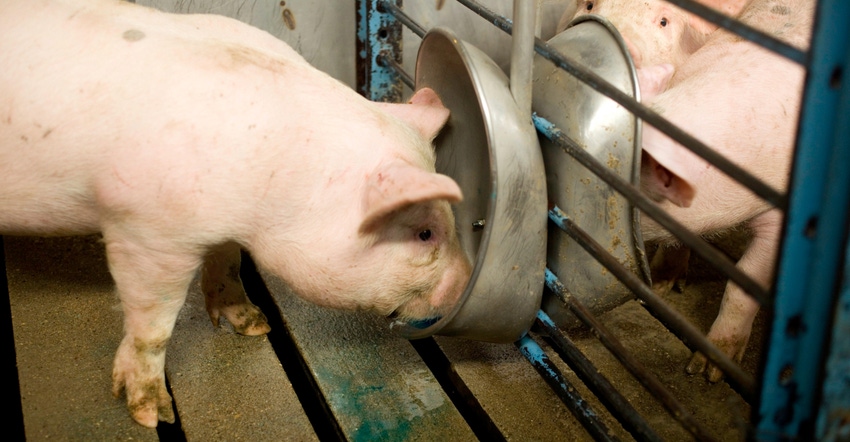The bacteria that causes ileitis is found on 90 percent of U.S. farms. Follow these tips to take a proactive approach to protecting your herd.
June 1, 2018

Sponsored Content
Swine producers battle a multitude of diseases that threaten pigs, but one of the most ubiquitous is ileitis. Ileitis is caused by the bacteria Lawsonia intracellularis, which according to the 2012 National Animal Health Monitoring System study, is found on more than 90 percent of U.S. farms.1 The high prevalence measured on farms coincides with what I often see clinically, as outbreaks of ileitis are still common.
Because L. intracellularis is so pervasive, it is imperative that swine producers take a proactive approach to protecting their herds. But implementing an effective, whole-herd protection strategy doesn’t need to be labor intensive.
It Starts With Biosecurity
L. intracellularis spreads between pigs and from sow to pig as they come into contact with and ingest fecal matter containing the bacteria. Because L. intracellularis is endemic on most farms,1 eradication is unlikely; however, good biosecurity practices like “all in, all out” and the cleaning and disinfecting of facilities and equipment, can help slow the spread of the bacteria.
Another critical biosecurity practice is understanding how L. intracellularis enters your herd so you can intervene at the right place and the right time. This often starts with proper management of incoming gilts. I recommend giving all incoming gilts a dose of the oral vaccine, Enterisol® Ileitis, either at selection or upon entry into the sow barn. This mitigates the chance of bringing L. intracellularis in from the outside and exposing the rest of the herd.
The Direct Approach
Oral vaccines such as ENTERISOL ILEITIS trigger an immune response directly where it’s needed by following the natural route of L. intracellularis infection. Because L. intracellularis is transmitted orally, it is reasonable to provide a solution through an oral vaccine.
Oral administration is also an easier way of administering the vaccine, which becomes as simple as pigs taking a drink of water. There is no excess handling of the animals, no injections into the muscle, and no side effects that can accompany intramuscular injections. I recommend starting vaccination in pigs three weeks or older, and certainly at least three to four weeks prior to when natural exposure could occur.
A Time-Saving Tool
Oral administration is not only easy on pigs, it’s easy on people, too. ENTERISOL ILEITIS is distributed into the water supply to ensure each pig receives the proper dose over the course of six hours. It simplifies the process for producers and frees up their schedule to accomplish other critical tasks around the farm.
For more information on ileitis and ENTERISOL ILEITIS, visit www.swineresource.com, or talk to your Boehringer Ingelheim representative.
References
1USDA NAHMS Swine 2012 Study www.aphis.usda.gov/.../Swine2012_dr_PartII.pdf
Enterisol is a registered trademark of Boehringer Ingelheim Vetmedica GmbH. Infection Chain is a trademark of Boehringer Ingelheim Vetmedica GmbH. ©Boehringer Ingelheim Vetmedica, Inc. POR-0957-ENIL0618
About the Author(s)
You May Also Like



